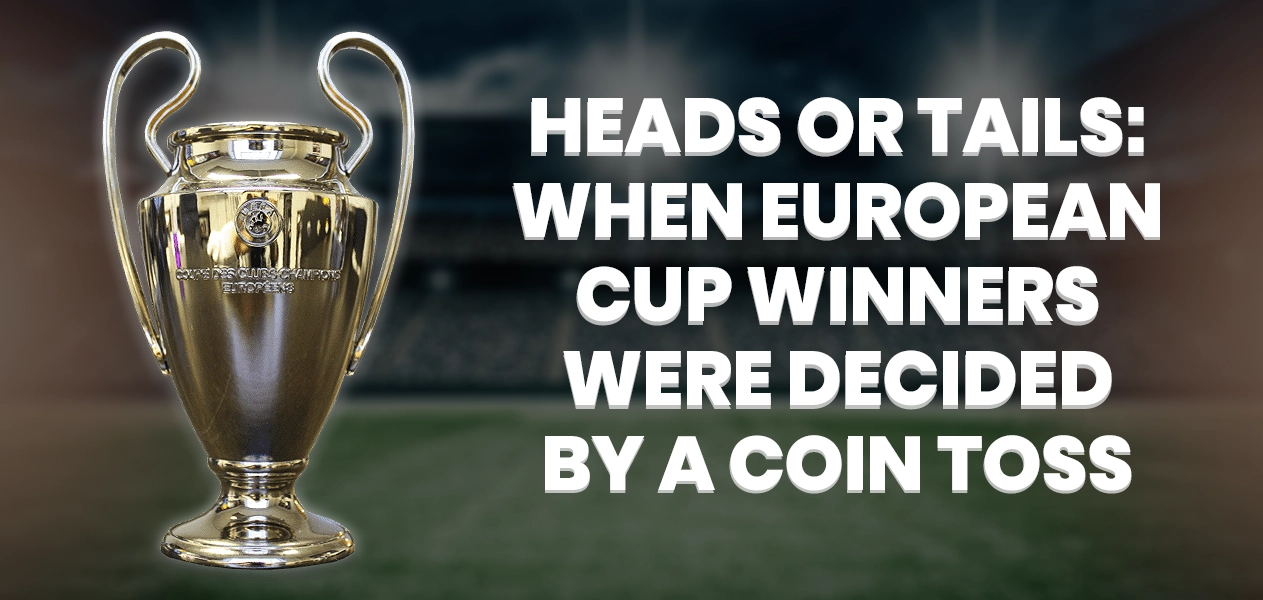Heads or Tails: When European Cup Winners Were Decided by a Coin Toss
In the world of football, penalty shootouts are often referred to as a lottery. While chance plays a part, the outcome depends heavily on the skills of both the player taking the penalty and the goalkeeper. However, before the advent of penalty shootouts, there were times when the winner of a European cup tie was decided by the flip of a coin. This article explores some of the most interesting instances where coin tosses determined the fate of teams in UEFA competitions, specifically the Cup Winners’ Cup and the European Cup.
The Cup Winners’ Cup

The first notable coin toss in the Cup Winners’ Cup occurred during the 1963/1964 season. In the preliminary round, Dynamo Zagreb faced off against Austrian team LASK. The two teams were evenly matched, with LASK winning the first leg in Linz 1-0 thanks to a goal by Hermann Fürst. Dynamo Zagreb equalized with a 1-0 win in the second leg at home. The tie was then settled with a replay in Zagreb, which ended in a 1-1 draw. With no clear winner, the decision came down to a coin toss, and Dynamo Zagreb advanced. They were eventually eliminated in the quarter-finals by Celtic, who won 3-0 away and 2-1 at home.
Another coin toss occurred the following year in the 1964/1965 season. Galatasaray and Magdeburg faced each other in the round of 16, and none of their three matches could determine a winner. The first leg in Magdeburg, the second leg in Istanbul, and the replay in Vienna all ended 1-1. Ultimately, Galatasaray was favored by the coin toss. However, they were stopped by Legia Warsaw in the next round. Legia won the first leg 2-1 in Warsaw, and despite a 1-0 loss in Istanbul, they triumphed 1-0 in the replay to advance.
The most intriguing coin toss in the Cup Winners’ Cup took place during the 1966/1967 season. In the quarter-finals, Zaragoza and Rangers faced off. Rangers won the first leg in Glasgow 2-0, but Zaragoza responded with a 2-0 victory at home. The tie was not resolved in extra time, and instead of a replay, a coin toss determined that Rangers advanced. Rangers went on to the final, where they narrowly lost 1-0 in extra time to Bayern Munich. This marked the first time a team progressing through a coin toss reached the final.
The 1969/1970 season witnessed another memorable coin toss. Roma advanced over PSV Eindhoven by a coin toss after exchanging 1-0 home victories and a replayless draw. In the semi-finals, Roma was eliminated by Górnik Zabrze, who advanced through a coin toss after a series of draws and a final replay in Strasbourg. Górnik’s victory marked the first and only time a Polish team reached the final of the Cup Winners’ Cup. This was also the last instance of a coin toss in the tournament’s history.
The European Cup

The European Cup, which began five years earlier than the Cup Winners’ Cup, also had its share of coin tosses. The first instance occurred in the 1957/1958 season’s preliminary round when Polish team Gwardia faced East Germany’s Wismut. The teams exchanged 3-1 home victories, and their replay in Berlin ended 1-1. A coin toss determined that Wismut advanced, but they were subsequently defeated by Ajax in the quarter-finals.
In 1963, Zurich and Galatasaray were involved in a coin toss in the first round after they could not separate themselves across their home victories and a 2-2 draw in the replay. Zurich won the coin toss and went on to lose to Real Madrid in the semi-finals.
The 1964/1965 season was particularly notable for its coin tosses. Anderlecht progressed past Bologna through a coin toss after home and away matches and a 0-0 draw in the replay. In the round of 16, Dukla Prague advanced over Górnik Zabrze, and Liverpool advanced over Köln, both determined by coin tosses. More details about Liverpool’s coin toss can be found in the blog “Asterisk.”
The last coin toss in the European Cup occurred during the 1969/1970 season. Galatasaray advanced over Spartak Trnava after exchanging 1-0 home victories. In the same round, Celtic survived Benfica after a dramatic match where the coin toss was the deciding factor. Celtic eventually reached the final but lost to Feyenoord 2-1 in extra time. This was the first and only time a team that advanced through a coin toss reached the final of the European Cup.
Strange Traditions in Football

In the past, drawing lots was a common way to determine winners in the event of a draw. For instance, in 1873, Sheffield and Shropshire decided their tie by a coin toss after repeated draws. Another unusual instance occurred in 1954 when a blindfolded child determined the outcome of a World Cup qualification match between Spain and Turkey.
The most famous instance of a coin toss occurred at the 1968 European Championship semi-final between the Soviet Union and Italy. After a goalless draw in regular and extra time, the outcome was decided by a coin toss. Italy won and eventually went on to win the final, while the Soviet Union finished in third place.
The practice of using a coin toss was gradually phased out. A pivotal moment came in 1968 during the Olympic Games quarter-final between Bulgaria and Israel. The decision to use a coin toss led to Israel’s elimination, prompting FIFA to introduce penalty shootouts in place of coin tosses for determining winners in the event of a draw.
Conclusion

Coin tosses in football, while a relic of the past, represent a unique aspect of the sport’s history. Though they seem arbitrary compared to the skill-based penalty shootouts of today, they were once a vital part of determining the outcomes of crucial matches in European competitions. As football has evolved, the use of coin tosses has become rare, but the stories of these historical moments remain a fascinating chapter in the sport’s rich history.

